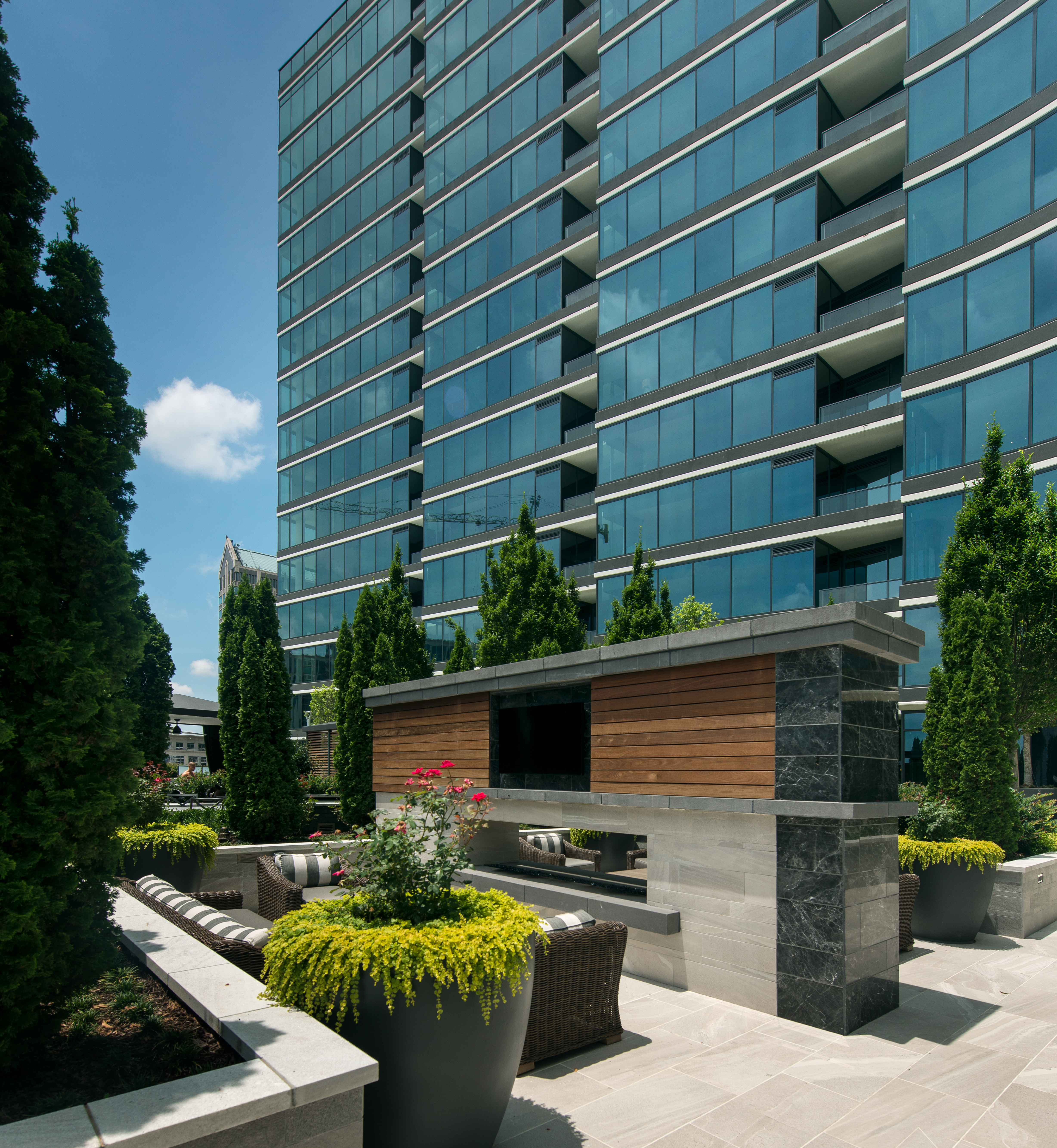High-Performance Glass for Sustainable Design
 1 AIA LU/HSW; 1 GBCI CE Hour; 0.1 ICC CEU; 0.1 IACET CEU*; 1 AIBD P-CE; AAA 1 Structured Learning Hour; This course can be self-reported to the AANB, as per their CE Guidelines; AAPEI 1 Structured Learning Hour; This course can be self-reported to the AIBC, as per their CE Guidelines.; MAA 1 Structured Learning Hour; This course can be self-reported to the NLAA.; This course can be self-reported to the NSAA; NWTAA 1 Structured Learning Hour; OAA 1 Learning Hour; SAA 1 Hour of Core Learning
1 AIA LU/HSW; 1 GBCI CE Hour; 0.1 ICC CEU; 0.1 IACET CEU*; 1 AIBD P-CE; AAA 1 Structured Learning Hour; This course can be self-reported to the AANB, as per their CE Guidelines; AAPEI 1 Structured Learning Hour; This course can be self-reported to the AIBC, as per their CE Guidelines.; MAA 1 Structured Learning Hour; This course can be self-reported to the NLAA.; This course can be self-reported to the NSAA; NWTAA 1 Structured Learning Hour; OAA 1 Learning Hour; SAA 1 Hour of Core Learning
Learning Objectives:
- List the energy efficiency and aesthetic attributes architects should consider when specifying high-performance glazing.
- Evaluate different glass samples to select the most appropriate type and style for a project in order to satisfy comfort and sustainability goals.
- Discuss current standards and certification programs that can help support sustainable design goals when specifying high-performance glass.
- Explain how lowering visible light transmission through high-performance glass can improve the comfort and health of the occupants, while supporting energy-savings goals and providing ample light within the building.
- Note the use of oversized glass as a growing design trend and highlight some considerations.
This course is part of the Glass in Architecture Academy
Quality
The quality of glass is determined by a number of factors, both during the manufacturing process and subsequent fabrication process.
Annealed glass is glass that has been cooled slowly to prevent any residual stress in the body of glass. Annealed glass can be cut, machined, drilled, edged and polished, unlike tempered or heat-strengthened glass. Annealing is done during the float glass manufacturing process.
Annealed glass is popular in residential construction and is sometimes used in commercial construction applications. Most heat-treated and tempered glass that is manufactured is used in commercial applications because these treatments provide added strength.
Heat strengthened (HS) glass is subjected to a specifically controlled heating and cooling cycle that generally makes it twice as strong as annealed glass of the same thickness and configuration. According to ASTM C1048, heat strengthened glass must have a residual surface compression (RSC) level between 3,500 and 7,500 PSI for a thickness of up to 6 millimeters. Due to its greater resistance to thermal loads (when compared to annealed glass), it can resist most wind and thermal stress loads. However, when broken, the fragments are typically larger than pieces of thermal glass that are broken and may remain in the glazing opening. It’s important to note that because it breaks into large pieces that can cause injury to occupants, HS glass is not a safety-rated glazing as specified by building codes. Because it can withstand wind load and thermal stress, HS glass is intended for general glazing and is often used in commercial applications. HS glass cannot be cut or drilled after heat strengthening.
Tempered glass is approximately four times stronger than regular annealed glass of the same thickness and configuration. Per ASTM C1048, its RSC level must exceed 10,000 PSI for thicknesses up to 6 millimeters. Tempered glass is often referred to as a “safety glass” because it meets the requirements of various code organizations for safety glazing. If fractured, the glass will break into smaller pieces, thus making it less likely to cause serious injury in most applications. Tempered glass is often used in sliding glass doors, storm doors, building entrances, bath and shower enclosures, interior partitions, and in windows near floors. Tempered glass cannot be cut or drilled after tempering. Like heat-strengthened glass, any alterations made to tempered glass can cause premature failure.
While HS and tempered glass are much stronger than annealed glass, there are some aesthetic challenges that arise during production. The heat-treating process can create optical distortion or optical quality and flatness, which can be reduced by using the latest technology, but not eliminated.
Four of the main forms of optical quality and flatness impacted by the heat-treatment process include roll waves, a bow in the material, warped material, or a strain pattern.
Roll waves can be caused by ceramic rollers in the furnace. During the heating process, glass will sag very slightly between the carrier rolls that transport the glass through the furnace. After heating, the glass passes through the rapid cooling process, or quench process, which “freezes” the glass, creating the compression and tension that provides either HS or fully tempered glass. However, this process can sometimes result in slight deviations that look like ripples, or roller waves. These waves can be more prominent in reflective glass; however, high-quality specs and high-quality fabrication practices with peak-to-valley tolerances will help minimize distortion. The recommended distortion limits from peak to valley are 0.003 inch to 0.005 inch.
The heat-treatment process can impact the flatness of glass. Glass can become bowed or warped during the manufacturing process. Bowed glass will have a curvature up or down from the horizontal plane. Warped glass will have a twisted bend or curvature. Bow and warp limits are specified by ASTM C1048.
Sometimes glass can have a strained pattern that looks like iridescence or dark shadows that appear under certain light conditions. These are particularly visible in polarized light and are referred to as “quench marks” or “leopard spots.” A strain pattern is caused by the slight difference in glass density within the same lite during the quench process where the high-velocity air is quickly applied through air nozzles. Glass surfaces directly opposite the quench nozzles achieve a slightly higher level of surface compression than adjacent areas. This creates a very slight change in density between the glass area directly under the nozzles and the area away from the nozzles. These slight differences in density result in light and dark areas observed in the heat-treated glass. Because strain pattern is characteristic of heat-treated glass, it is not considered a defect.
To improve optical quality and flatness of heat-treated glass, many factors must be taken into consideration when optimizing the heat-treatment process. The conveyor system, furnace temperature uniformity, and quench design will affect the optical quality of the heat-treated glass. Also, quality inspection methods are necessary to ensure that these systems are functioning properly and that the glass that’s used in construction is top quality.
Laminated glass is another type of glass that is especially popular in applications where extra protection is required. Laminated glass consists of two or more lites that are permanently bonded by heat and pressure with one or more plastic interlayers of polyvinyl butyral (PVB).
Both the glass and the interlayers can be supplied in a variety of colors and thicknesses to provide the desired appearance. Laminated glass can be used in a host of different design applications.
Project applications include areas prone to hurricanes, earthquakes, or explosions as well as areas that require bullet- or impact-resistant glass. Laminated glass can also be used in areas where sound reduction is preferred, such as in buildings near the freeway or an airport. It can also be used in glass storefronts, providing protection from smash-and-grab thefts from storefront window displays.
This protective glass is great for entrance doors, glass floors, glass stairs, aquariums, and display cases. Even if the glass does break, it tends to remain in its frame, thus minimizing the risk of injury from sharp edges. Laminated glass is designed to be more protective to provide added safety for occupants, allowing them more time to safely escape in the event of a natural or man-made disaster that could cause damage or breakage to the glass. Varying levels of tolerances are available for different applications.
In addition to being a “safety glass,” laminated glass can also reduce the fading of interior objects that is often caused by excessive sun damage and exposure. It can also provide sound resistance, which can be useful in areas prone to noise from traffic, airplanes, or industrial noise. Lastly, laminated glass can improve acoustic performance and be useful in facilities where occupants may want to limit outside sound as well as limit sound transfer throughout the building.
The acoustic performance of glazing assemblies is expressed in two terms: sound transmission class (STC) and outdoor-indoor transmission class (OITC). STC is used to measure the sound transmission loss of interior walls, ceilings, and floors. OITC measures the sound transmission loss of exterior glazing applications. Laminated glass and insulating glass tend to produce higher OITC ratings because the laminate dampens the vibrations and the air space limits sound transmission.
Coatings
As discussed earlier, a full glass product is made up of float glass plus the coatings that are applied after the glass is manufactured. Coatings are added to provide tints, reflectivity, transparency, and to limit thermal heat transfer. The goal is to achieve a lower U-value, which is the value used to determine potential heat gain. By having a lower U-value, the energy efficiency of the glass is improved.
Low-e coatings are growing in popularity due to their relatively neutral appearance. The image below shows how low-e coatings increase the amount of solar heat that is reflected while decreasing the amount of heat that is absorbed.

Photo: © 2018 LaCasse Photography
Combining a subtle blue hue with superior solar control, a high-performance, low-e, triple-silver coating on clear bent and flat glass clads Hanover Buckhead Apartments.











